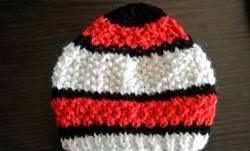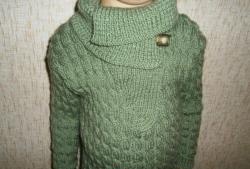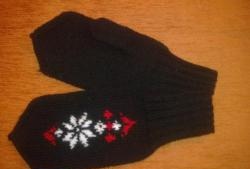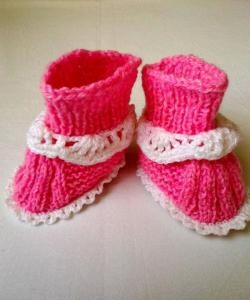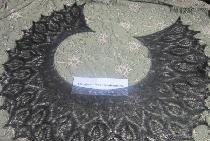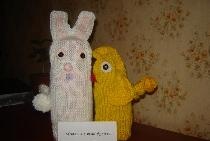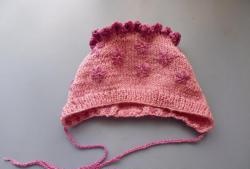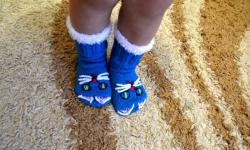
The most important knitting stitches
There are two main types of loops that you need to master at the stage of mastering knitting - knit and purl.They are the basic elements for composing any type of fabric: shawl - consists of rows connected only with facial loops; smooth - consists of alternating rows of purl and facial loops; elastic (elastic band) - consists of sequentially alternating front and back loops in one row; openwork - knitting, one row of which is made from a combination of knit double loops and yarn overs, and the other is knitted only with purl loops; relief (with braids) - consists of alternating stripes of the front and back surface, while in one row the front elements periodically cross or intertwine; flat fantasy - is a pattern consisting of systematized sections of the back and front surface. Finally, without the ability to knit and purl stitches, beginning knitters will not be able to master the creation of multi-colored knitted patterns, which are known as Norwegian or Nordic motifs in the form of stars, deer, snowflakes and flowers.
In a word, knowing how to knit only front and back loops, you can create real handicraft masterpieces that, in addition to aesthetic pleasure, will give the owner of a knitted item warmth in the usual sense, and a feeling of comfort.
Face loops - how to knit them
The first stitches that a novice craftswoman needs to get to know closely are knit stitches. Making them is very simple - for this you need to have more or less developed perseverance and attentiveness. So, in front of us are knitting needles with stitches cast on, the working thread is placed behind the future fabric. To knit a front loop, perform the following manipulations:
1. We insert the working needle into the loop from the front edge (the one that is closer to the knitter).
2.We hook the working thread with the tip of the knitting needle in the direction from top to bottom.
3. Pull a loop of working thread through a loop on the knitting needle.
And now the first front stitch is ready - it is located on the right knitting needle (working) and is indicated by a red arrow, and on the left there is a loop that is about to become an element of the previous row (indicated by a blue arrow). It needs to be thrown off the left knitting needle for the work to move forward.

Next, the described actions are performed with each loop in the row. If the second, third, and all subsequent rows are knitted only with knit stitches, you will get a classic shawl fabric.
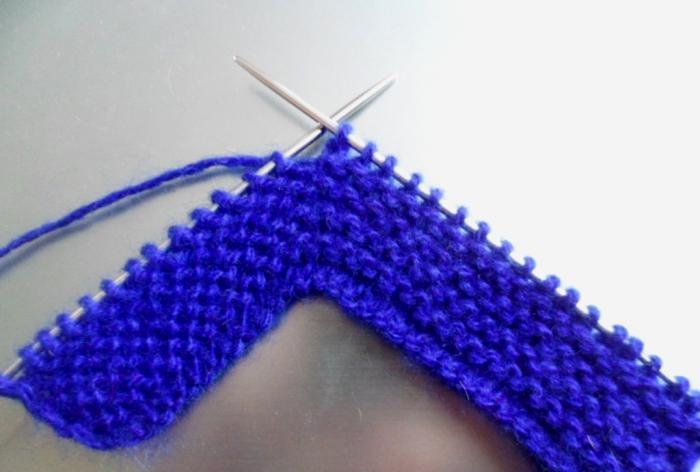
Of course, to create real masterpieces with knitting needles, only knit stitches will not be enough for a knitter, so after mastering them, you can safely move on to studying purl stitches.
Purl loops - technology for creating them
The purl loops are a mirror image of the front loops, and therefore a craftswoman who has mastered the previous type of knitting will not experience difficulties. The starting position for knitting such loops is actually the same as when knitting a garter fabric, but the working thread is thrown to the front side of the work, closer to the craftswoman.

The working needle is inserted into the loop of the previous row from the rear edge (see photo). Next, the thread is grabbed with a working knitting needle and pulled through the loop of the previous row.
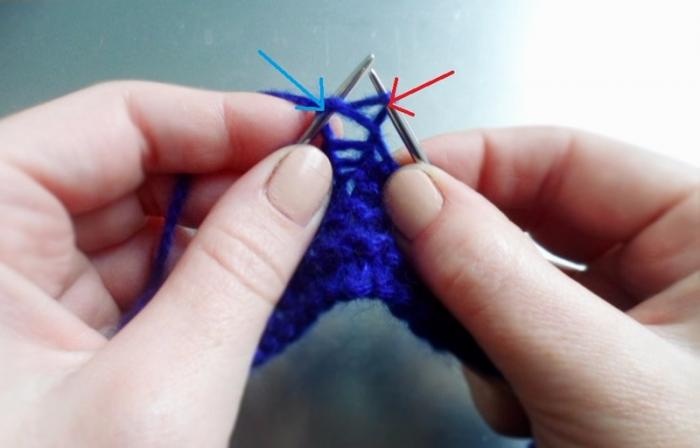
In the photo, the red arrow indicates the knitted purl loop. It should be left on the right knitting needle. The blue arrow points to the loop that needs to be removed from the left knitting needle after pulling the working thread through.
If you knit all rows only with purl stitches, the fabric will look the same as when knitted with knit stitches - you will get a classic garter stitch.
Combinations of knit and purl stitches
Once the knit and purl stitches have been mastered well enough, you can begin combining them. This will make it possible to obtain knitted fabrics of different structure and characteristics.
Front and back stitch
The most common combination of knit and purl stitches can be seen in smooth fabric. You can knit this fabric by alternating rows of knit stitches with rows of purl stitches.
Its front part looks like pigtails pressed together. It is the stockinette stitch that is used when knitting multi-colored patterns.
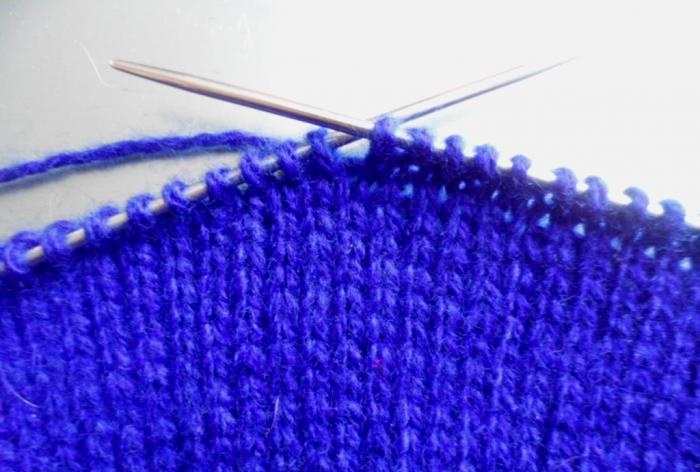
The reverse side of such canvases is completely covered with “lamb” loops. This type of fabric can often be seen only on the wrong side of knitted items. However, in some cases it is used as a front base when tying braids.
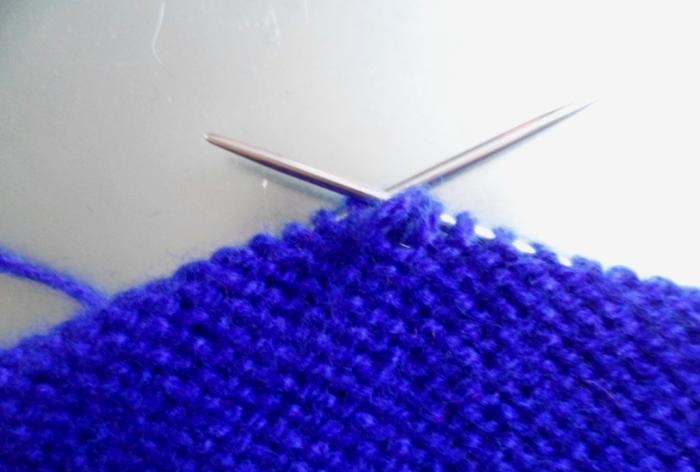
Smooth fabric is considered the densest among other types of knitted fabrics. However, it also has disadvantages - the edges of products knitted with satin stitch curl.
Rubber band or elastic fabric
This type of knitting is used to decorate the edge of a knitted item, as it has increased elasticity and perfectly sets the shape of the entire product. The pattern of the elastic fabric consists of alternating stripes of the front and back surface. They can be of different widths. The most popular elastic bands among knitters are 1:1, 2:2, 2:3, 3:3, where the first number corresponds to the number of knit stitches, and the second number corresponds to the number of purl stitches in the repeat.
This is what the simplest and most “stretchy” elastic band looks like, knitted according to a 1:1 pattern.

It is used to decorate the bottom of the product, neckline, and cuffs. It also makes excellent belts that won't curl even after washing.
The elastic band knitted according to the 2:2 pattern looks a little different - its stripes are wider. This fabric has less elasticity compared to the previous version, but it is very often used to design necklines, cuffs, and also to highlight the waistline on elongated products.
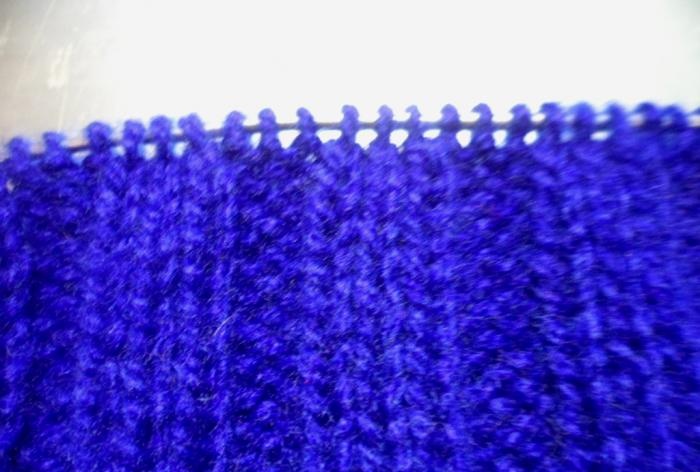
Textured knitting - flat and raised patterns
Obtaining a textured, that is, artistically designed, knitted fabric is what people most often begin to get acquainted with this type of needlework. It can be flat or embossed, complex or relatively simple, but in any case, to create it you will need to almost perfectly master the technique of knitting front and back loops.
The easiest texture knitting to reproduce is flat. In this case, certain areas of the fabric represent the purl, while others represent the front surface. The most common example of a flat textured knit is the “Chess” pattern (see next photo), knitted according to a 3:3 pattern with a change of order after 3 rows.

The main advantage of such patterns is the ease of creation and the ability to create exclusive patterns.
Another option for flat textured knitting is the “Rice” pattern. It is knitted according to a 1:1 pattern (knit stitches alternate with purl stitches in each row). Essentially, this pattern is worked in the same way as a 1:1 rib, but on each row the purl stitches need to be worked over the purl stitches and the knit stitches over the knit stitches.
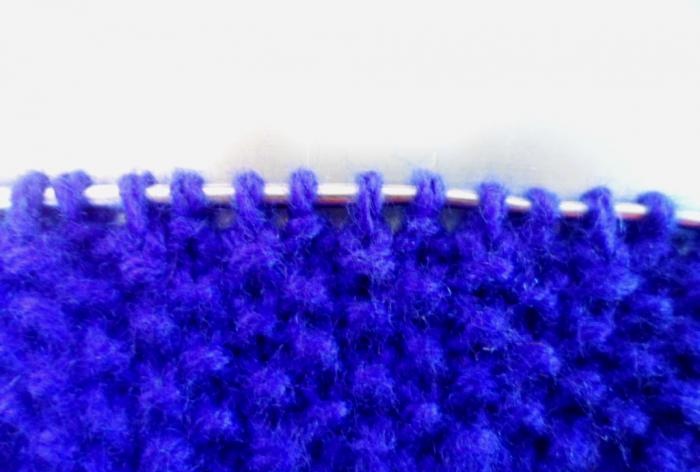
Knitting relief patterns - braids, interlacing stripes - is a little more difficult in terms of labor costs. The main “field” in this knitting is the purl stitch, and the protruding (convex) elements are knitted with the front stitch. To get a truly embossed pattern, the craftswoman will need additional knitting needles. With their help, you can change the direction of the element.
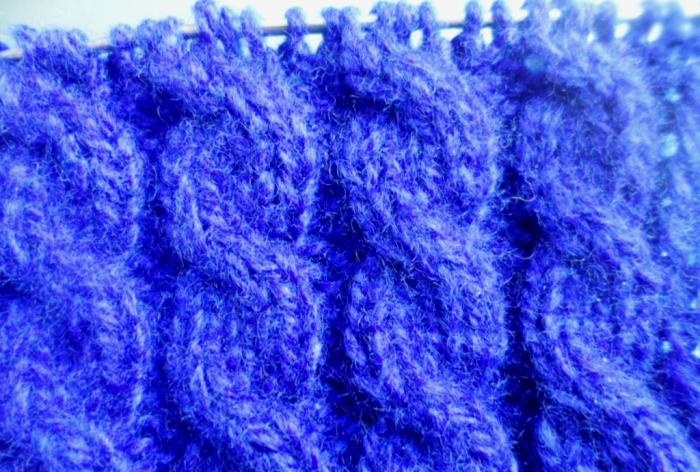
To get the same braids as in the photo above, knitting begins according to the pattern for an elastic band 2:4. The purl stitch will be narrower, and the front stitch, accordingly, wider. Having knitted several rows, the “pillar” of knit stitches is crossed. To do this, when working on the front side, 2 of the 4 loops are removed onto an auxiliary knitting needle and left in front of the fabric, and the two remaining loops of the element are knitted with facial loops.
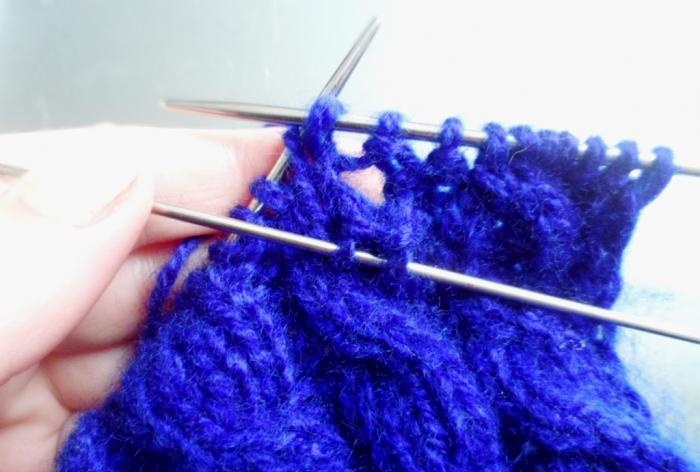
Then knit the loops removed onto the auxiliary needle (also with knit stitches). This is done with each braid.
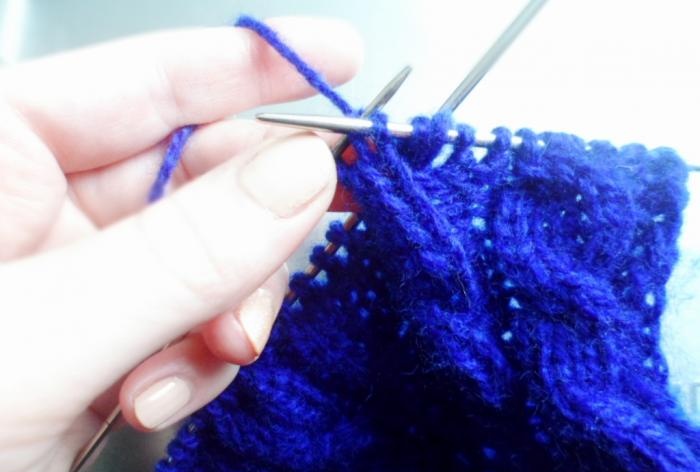
Then the cycle is repeated several times until the craftswoman fulfills her creative ideas.
Another area of application of front and back loops is the creation of openwork patterns. They are rightfully considered the most difficult milestone in knitting, since their patterns consist of a combination of knit stitches knitted together in odd rows, and purl stitches in even rows. In fact, openwork knitting is a great way to add lightness and special charm to things, as it introduces holes.
To create a classic “mesh,” you alternate between a yarn over and two loops tied together. To create more complex patterns, stockinette stitch is included in the pattern. If you divide the yarn over and double the loops with several loops, you can get a beautiful effect of oblique or slanted knitting. We will talk about this technique in more detail in another article.
Happy creativity, lovers of knitting needles and knitted masterpieces!
